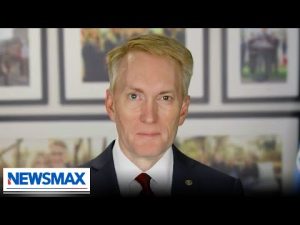In the realm of Washington politics, it seems that the blame game is a well-practiced sport, and President Trump showed his expertise once again. In a recent address, he cast his net of accusations, reminding us just how finger-pointing can reach an art form. Tulsi Gabbard’s criminal referral to the Department of Justice opened the floor, and Trump eagerly stepped in. If there was any doubt about who Trump thinks orchestrated the so-called grand conspiracy against him, he made it crystal clear—it’s former President Barack Obama and his cohort from the White House days.
Trump, ever the master of melodrama, painted a picture worthy of a political thriller. He vividly described a room, exalted now with the presence of the Declaration of Independence, where Obama, Biden, and their allies allegedly concocted their schemes. The way Trump tells it, you would think the previous administration moonlighted as scriptwriters for a Cold War spy novel. One certainly can’t deny the flair he adds to the narrative, complete with treasures pulled from the “vaults” and ancient plots afoot.
But who are the cast members in this political drama? According to the narrative Trump weaves, they include familiar figures—James Comey, James Clapper, John Brennan, and, of course, the perennial villain of conservative rhetoric, Hillary Clinton. Trump claims this group tried to pull off what amounts to grand election theft, ensuring their names go down in history, at least in certain conservative circles, as would-be democracy disruptors.
Trump didn’t stop there; he saved some of his choice words for Hillary Clinton. Reprising “Crooked Hillary” like a hit single from a past era, he accused her and the Democrats of funding a fictional report by Christopher Steele. The financial conspiracy had a price tag of $12 million, paid to create what Trump labeled a “fake report,” an “admitted fraud” designed to derail his presidency before it even began. It’s the kind of well-packaged story that keeps conspiracy theorists busy and op-eds plentiful.
Let’s not forget the Steele dossier, which Trump argues was a mere fabrication that even the press, often dubbed fake by Trump himself, saw through at the time. According to his account, this attempt to influence the election internally combusted when media outlets refused to publish it before the election. For once, Trump gives them a backhanded nod of acknowledgment, a sliver of unexpected respect for not taking the bait. Still, in Trump’s world, this saga sets the stage for a veritable showdown, likely to keep political commentators busy for yet another news cycle.







